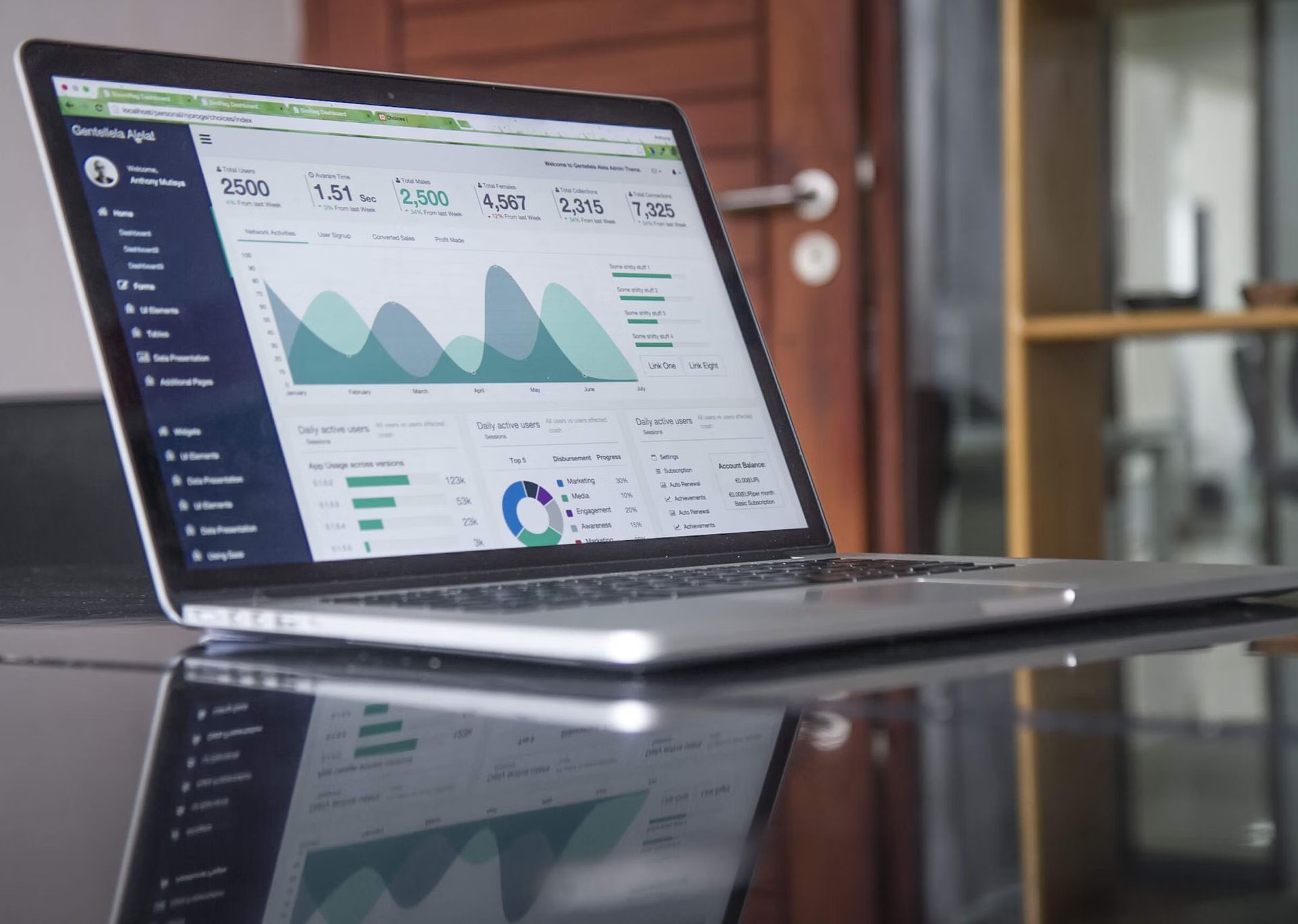If used properly, data presents a multitude of opportunities for people and businesses aiming to enhance their operational effectiveness, business intelligence, profitability, and long-term success. Today, failing to use digital data to your advantage could have severe effects on your company. It’s like trying to navigate a busy roadway while wearing a blindfold.
Because the amount of data available is increasing at an exponential rate, it’s essential to use the appropriate online reporting tools to segment, curate, and analyze massive data sets as well as find solutions to issues you didn’t even know you had. Ad hoc analysis and reporting are crucial when trying to identify solutions to particular problems.
Ad hoc reports meaning: What are ad hoc reports?
What does ad hoc report stand for? Ad hoc, or “as needed,” reporting and analysis solutions can enable all staff members to gain access to critical organizational insights so they can quickly respond to business queries and make proactive, well-informed decisions. This includes both nontechnical leaders and expert data analysts.
Ad hoc reporting is a business intelligence (BI) procedure that enables end users who are not technically savvy to produce BI reports on their own. Ad hoc reports can assist readers in visualizing data, which is important for getting useful responses to their inquiries. These solutions can boost a company’s operational effectiveness, boost earnings, and eventually help it grow.

For both individual users and companies, ad hoc reports have a number of benefits over canned reports. Additionally, ad hoc reports have particular advantages for each industry (in addition to its general advantages). However, in order to maximize the benefits of ad hoc reporting, the designer must adhere to a number of best practices.
What are the goals of ad hoc reports and analysis?
Ad hoc reporting and analysis’s main objective is to assist organizations in making the best use of their data at any given time. These are the main goals of ad hoc reports and analysis:
- Providing data to decision-makers
- Motivating company executives to explore data
- Overseeing the decision-making pathways
Providing data to decision-makers
Regardless of technical proficiency, anyone can be a data wizard with self-service solutions. Ad hoc technologies will be most useful to organizations when they allow business executives to query firm data independently, without the aid of data analysts or IT staff.
Navigate through the rough seas of retail with business intelligence as your compass
Without self-service options, ad hoc reporting and analysis requests frequently overtake data analysts. Analysts may focus on more worthwhile duties, and business leaders become self-sufficient when anyone has access to their organization’s data at any time, which saves the company time and money.
Motivating company executives to explore data
Data discovery is stimulated when data is made more widely available to the workforce. Ad hoc tools that are easy to use can encourage information sharing between teams and departments. More people, not only analysts, who have access to shareable, communicable data are more likely to notice trends, discrepancies, new opportunities, and other things.

Overseeing the decision-making pathways
Ad hoc reports and analyses, whether they pertain to marketing, human resources, sales, inventory, finances, or other important business areas, give a general picture of the state of the company through a particular filter. Because of the information’s intuitive organization and presentation, leadership and stakeholders can use it without requiring a thorough technical explanation. In other words, the decision-making process can be improved by swiftly and readily distributing reports and analyses to a group or organization for discussion.
Benefits of ad hoc reports and analysis
Since ad hoc reporting solutions differ in their capabilities, it is crucial to consider all the specifics while assessing a business intelligence tool. These are the main benefits of ad hoc reports and analysis:
- They reduce the IT workload
- They are easy to use tools
- They guarantee adaptability in the dynamic corporate environment
- They save time and cost
- They are fully customizable
They reduce the IT workload
Ad hoc reporting’s self-service capabilities enable end users to work with customized reports on specialized business areas without requiring the technical support of developers, which accelerates the report production process. This minimizes any potential interdepartmental obstacles while saving time and money.
They are easy-to-use tools
Finding the right answers to the right questions is now easier than ever, thanks to ad hoc data analysis platforms or dashboards’ intuitive and visual nature. This makes it possible for users to make decisions and implement business-improving initiatives without having to wade through overwhelming data streams.
Brands build everlasting bonds with data-powered affinity marketing instruments
They guarantee adaptability in the dynamic corporate environment
Ad hoc analytics provides an interactive reporting experience that allows users to add or modify data in real time. Users can ask questions and make adjustments when report components are chosen individually to meet their needs and objectives. The ability to follow the constantly changing business environment as the business situation dictates and continuously changes is one of the advantages of ad hoc reporting, which is crucial for providing quick answers to business concerns.

They save time and cost
Due to their user-friendly yet effective interface, modern ad hoc reporting systems are intended to save countless hours. Users can generate interactive visualizations thanks to their intuitive nature without having to wait for an expert analyst or, as was already indicated, the IT department. Since users don’t have to wait for reports and may create as many different types of ad hoc reports as they need, this self-service BI capability that enables a data-driven system entirely under the control of the user ultimately saves countless working hours and expenditures.
Additionally, the team will be more engaged if they can alter formulas right away and avoid using numerous spreadsheets to combine data or static presentations that are predetermined and don’t allow for further exploration of the data.
They are fully customizable
While the goal of ad hoc reporting is to increase and maintain visibility across a large organization, it’s crucial to take into account the customization options that these reports provide. For example, several of the products have built-in dashboards that you can utilize and customize based on business requirements. By doing so, you may save even more time and concentrate on what is really important: finding the business solution you were seeking for. Additionally, if you’re an experienced analyst seeking for cutting-edge software solutions, the ability to create your own queries inside the sophisticated SQL box, as said, will provide you even more freedom.
How to create ad hoc reports?
What is the procedure for generating ad hoc reports? The tool’s report designer should be easy for the user to use before they can build a report. Even though these solutions naturally support self-service, you can question whether the majority of your technical and non-technical users would find them sufficiently intuitive. Software providers wisely offer various levels of self-service capabilities in BI applications to accommodate users of diverse skill levels.
Vendors offer reporting templates with pre-built measures and dimensions for non-technical users so you can choose which KPIs to include and which filters to utilize.
A helping hand: Enterprise SEO tools are crucial for data analytics
For instance, you can create new reports and change old reports without a lot of technical expertise using JReport’s ad hoc reporting features. With the aid of a leading wizard and an easy-to-use interface, JReport enables end users to construct queries carefully for their required data returns. Drag-and-drop construction and visualization templates are included in the report-building features, which are very simple to use.

Over 40 distinct graphs, maps, and other report elements are available in the JReport templates and customization possibilities.
Another example would be Exago; it has two reporting modules: ExpressView and Advanced Reporting, the first of which is a simple self-service report creator, and the latter are for power users. The basic module offers drag-and-drop, calculations, charting, grouping, sorting, and filtering, while the advanced reporting module offers drill-down, pivots, and PDF, Word, and Excel document templates. Making the optimal choice for your firm might be difficult, given the wide variety of self-service reporting solutions available.
Ad hoc reports examples
There is no denying that businesses in all industries and sectors can benefit greatly from ad hoc analyses. Let’s explore this crucial data-driven initiative’s real-world business applications in more detail to show its potential. These are some of the most significant ad hoc reports examples:
- Financial ad hoc reports
- Healthcare ad hoc reports
- Sales ad hoc reports
- Recruiting ad hoc reports
- Retail ad hoc reports
- Government ad hoc reports
Financial ad hoc reports
Our first example of ad hoc reporting is centered on finances. Financial KPIs, measurements, and statistics are abundant in the financial business (or in the financial departments) by nature. Ad hoc data analysis has given companies the tools to delve deeply into narrowly focused data sets, or business objectives, and obtain the capacity to identify trends that will maximize returns on investment (ROI). company world.
In essence, you conduct ad hoc financial reporting whenever you need to comprehend your financial facts more thoroughly. For instance, you should determine your remaining revenue at the end of each month after deducting your direct expenses. In essence, you (or a stakeholder) need to find out your gross profit margin as soon as possible.
Ad hoc reporting allows for an immediate response, eliminating the need to wait for the IT staff to produce a straightforward graphic like the one above or to finish ad hoc dashboards if you have an upcoming meeting or presentation.
The Ukrainian fintech industry keeps growing despite the war
Although these are the main sectors that profit from this analytical method, regardless of your industry, you will notice measurable gains in important areas of your business by using reports like these alongside interactive business intelligence dashboards.
Healthcare ad hoc reports
We can also concentrate on the healthcare industry. A doctor might not know how to create an HTML report or execute a SQL query, but a reporting tool can quickly and easily provide data that is needed only once, such as a blood test report or the number of patients admitted to the ER on a certain day or week.
The healthcare industry has undergone a transformation thanks to ad hoc analysis. Using healthcare analytics software allows senior stakeholders in these institutions to make quick and precise decisions that ultimately save lives, increase operational efficiencies, and lower mortality rates. It also improves data accuracy.
Sales ad hoc reports
A business with a sizable sales database can use ad hoc reporting and analysis. Let’s imagine a user needs to know the result of a certain sale related to a specific scenario. In that case, the user would create a single report that would be utilized only once to convey the information. This situation can occur in businesses with a sizable outside sales force, which might export an ad hoc report outlining outcomes for his or her territory (number of clients visited or leads generated) in comparison to companywide sales targets.

Recruiting ad hoc reports
Running individualized, efficient, and accurate recruiting reports is crucial in our cutthroat business climate. Employers can identify problems with their human resources management and raise employee satisfaction by using an example from HR’s ad hoc reports. This is important given the scarcity of talent in all industries.
Practically speaking, over the course of a year or six months, you could infer or suspect a larger absenteeism rate. Investigating further by creating an example of an ad hoc report similar to the one above could prove to be quite helpful. The business can determine whether the assumption was accurate by looking at whether rates increased, remained the same, or reduced. If there is an increase, you can quickly pinpoint the reason by talking to the staff and coming up with a workable solution. You can read our post on the most important recruitment metrics to learn how to generate such graphics.
Retail ad hoc reports
These reports are very useful for loss prevention in the retail industry. Numerous renowned retailers have been able to analyze inventories and identify trends that have ultimately saved them a lot of money (and effort) using store-specific retail analytics reports that are customized to specific areas of loss prevention, such as employee theft or stealing.
Government ad hoc reports
Governmental organizations deal with a multitude of important data, observations, and choices that eventually impact many people. Governmental bodies all over the world benefit from improved public fund allocation while increasing productivity by being able to focus in on very specific tasks or challenges and gaining the level of insight needed to make accurate, successful decisions while automating once manual data gathering tasks. a proof of the effectiveness of ad hoc analysis.
Challenges of ad hoc reports and analysis
Ad hoc reporting and analysis provide many advantages, but every technology has drawbacks as well. When adopting ad hoc reporting and analysis into your business plan, keep the following points in mind:
- Limited view of the data: Business leaders might not have easy access to the data they require if it is segregated. All data inflows must be loaded into the software in order for users to focus on exactly what they need, when they need it and make the most of an ad hoc solution.
- Inconsistent data: Ad hoc reporting can only be successful if all users have access to the same underlying data. This means that data cannot differ across the business as this could result in conflicting conclusions and insights that would need to be resolved, delaying decision-making.
- The absence of adequate training: The best ad hoc technologies are straightforward, but managers still need to receive the right training to make the most of their ad hoc reporting and analytic solutions. Inadequate training can result in limits that have a detrimental impact. For instance, it’s crucial that business teams recognize that ad hoc reports typically present data pertaining to distinct, isolated data sets — something that shouldn’t be mistaken for a comprehensive business perspective.
- The absence of decent data governance: Ad hoc reporting and analysis effectiveness depends on effective data governance or the data management processes that guarantee the company has high-quality data that is secure, consistent, available, and useable. Because data may not be reliable, any gaps in an organization’s data governance procedures can have a detrimental impact on the results of reporting and analytics.
- Dependence on self-service tools: Although ad hoc reporting and analysis have certain advantages, businesses that solely rely on these self-service tools will miss out on the perks of static reporting. On the other hand, depending excessively on static reports renders timely advantages of ad hoc reporting and analyses useless. Companies should make an effort to strike the right mix between conventional recurring reports and ad hoc reports in order to receive a thorough picture of the data.
What is the opposite of an ad hoc report?
Well, calling it the exact opposite wouldn’t be the rightest thing, but the opposite of ad hoc reports can be counted as canned reports. If you’ve been assigned to create reports to disseminate the information, the reality that different stakeholders expect different information in different formats and with varying delivery criteria might turn into a nightmare.
So, how can you keep up with rising demands while maintaining your sanity? Selecting which reports may be “canned,” or automatically generated based on pre-set requirements is the key to saving your time and energy.
Either way, you can maximize efficiency:
- You can automate pre-built reports for insights that can be canned.
- Give business users the option to do quick and simple ad hoc analysis for all additional use cases.

Canned reports vs ad hoc reports
In general, using prepared reports places a significant burden on IT. An IT employee who is in charge of maintaining business intelligence (BI) tools must receive a request from a user. The IT staff member creates, generates, and provides the report’s results to the requester. Depending on the size of the business and the particular procedures needed, this procedure could take days.
Because it takes time away from implementing technology solutions for their organization and concentrating on their goal, this procedure is time-consuming for IT. In large firms, IT will often automate a substantial portion of this procedure, but one-time reports won’t profit from this automation. Ad hoc reporting necessitates a one-time setup of the reporting tool by IT.
Then, users are allowed to make their own reports, which are frequently made available in a matter of seconds. Ad hoc reporting functionality in BI software is typically intended for non-technical users, obviating the requirement for special training for business users to create ad hoc reports.
Conclusion
You can provide BI insights to your managers’ and clients’ follow-up questions by using ad hoc reports. Self-service reporting is essential in today’s busy business climate for speedy analysis without compromising accuracy.
Ad hoc reporting enables you to communicate with partners that are only privy to the precise information that pertains to their requirements. For instance, you could give a partner a personalized report on the goods they assist in creating and marketing. Time is saved, and data sharing between businesses is made simpler.
Without giving investors regular access to all of your business data, ad hoc reporting enables you to promptly communicate information about your company with them. Ad hoc reporting, for instance, can be used to present your company’s performance without divulging all of your business data if you’re wanting to acquire finance. This benefits your company by maintaining data security while enabling communication with potential partners.





